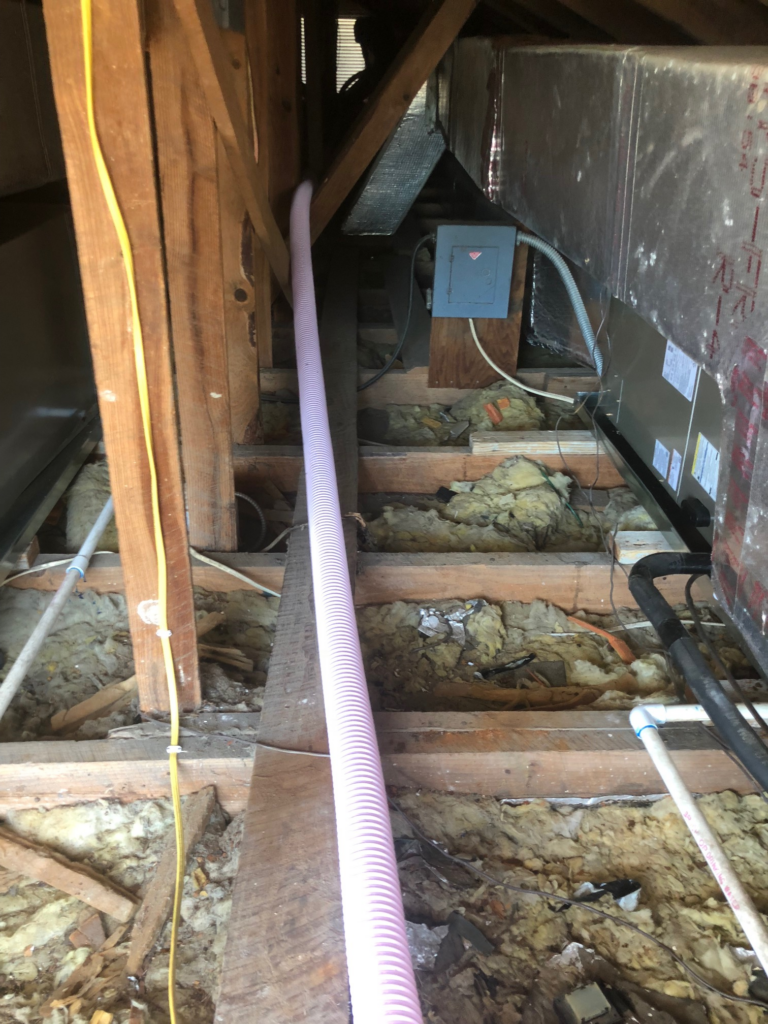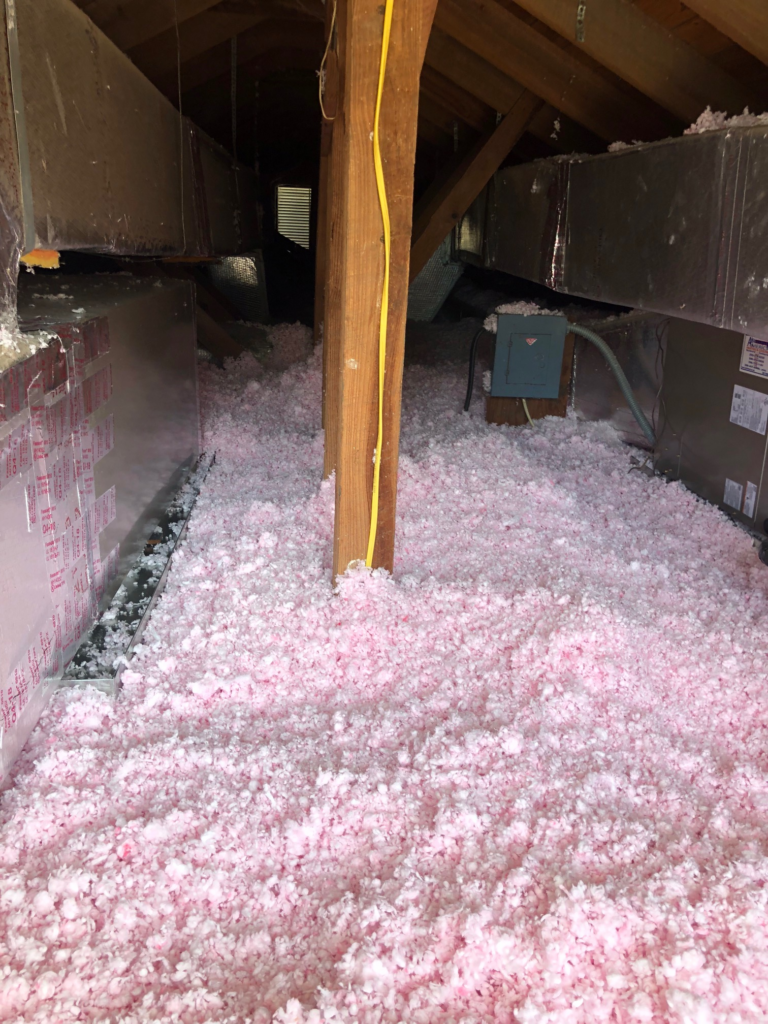How Much Attic Insulation Do You Need?
Does your attic look like this?

To determine if you need more attic insulation, the first thing you should look for are the floor joists. If you can’t see floor joists, that’s a good thing. It means you may already have enough insulation. If, on the other hand, your attic looks like the picture above and you can see your floor joists, you definitely need more insulation.
Just because you can’t see the floor joists doesn’t necessarily mean you have enough insulation. In order to know if you need more insulation in the attic, contact the attic insulation specialists at Air America Heating & Cooling.
You can also use a ruler or measuring tape to measure the depth in inches. Take a few different measurements of your attic insulation depth and take photos for your records. If you are measuring anything below 12 inches, ask your contractor about adding more insulation.
When working in the attic, make sure you only step on the floor joists! Bring up boards to walk on if needed. You may also want a flashlight, hardhat, safety glasses, gloves, and a dust mask.
For a more thorough attic insulation evaluation, contact the professionals at Air America Heating & Cooling. If you know you have low attic insulation levels, it’s time to call the professionals!
This looks better, doesn’t it?

Contact a Qualified Contractor If You Notice Any of These Problems:
- Wet, damp, or moldy insulation (must be professionally removed and can indicate a leaky roof)
- Rotting or damaged floor joists or rafters
- Exhaust air (from bathroom, kitchen, etc.) released into the attic instead of outdoors
- Evidence of ice damming in the winter
- Little or no attic ventilation
- Knob and tube wiring (can be a fire hazard, especially if it’s in contact with insulation material)
- Unsealed and uninsulated “can” lights
What Type of Insulation Should I Use for My Attic?
After determining that you could benefit from additional attic insulation, the next step is to select the type of insulation you want to add. Luckily, you don’t need to use the same type of insulation as what you currently have. For example, you can add fiberglass blankets over loose-fill insulation and vice versa.
Keep in mind that if you add loose-fill insulation, you will need to hire a professional since multiple people and special equipment are required.
Here are some of the most common insulation types:
- Blanket (batt and roll)
- Foam board
- Spray foam
- Loose-fill (blown-in)
Blanket Insulation (Batts and Rolls)
Rolls are very similar to batts, but instead of coming precut, they are purchased in rolls. You must cut the material to size.
Foam Board
Foam board is a versatile type of insulation that can be used for floors, walls, ceilings, and more. They are particularly useful for roofs and attic hatches.
Spray Foam
You can use spray foam insulation for walls, wall cavities, and unfinished attic floors. In addition to insulation, spray foam quickly expands and cures to also help seal air leaks. Spray foam insulation requires special equipment and certification, so make sure you hire a qualified contractor for the job.
Loose-Fill (Blown-In)
Loose-fill insulation is made up of very small pieces of cellulose, fiberglass, and other material. The great thing about loose-fill insulation is that it can conform to any shape, perfect for retrofits and oddly shaped areas.
Speak with the Attic Insulation Specialists at Air America Heating & Cooling Today!
The type and amount of insulation you choose for your attic depends on a variety of factors, such as moisture, ventilation, air leakage, geography, and more. Consult the professional insulation installers at Air America to determine which insulation is best for you. We’ll make sure to seal all attic air leaks before adding the proper insulation.
This small home improvement will save you thousands of dollars, dramatically improve comfort levels, and extend the life of your HVAC system. What are you waiting for?
Call Air America today for your FREE attic insulation consultation!
